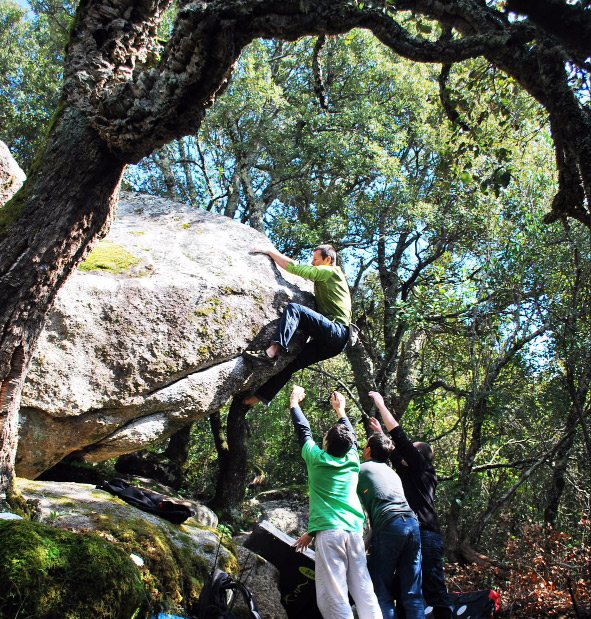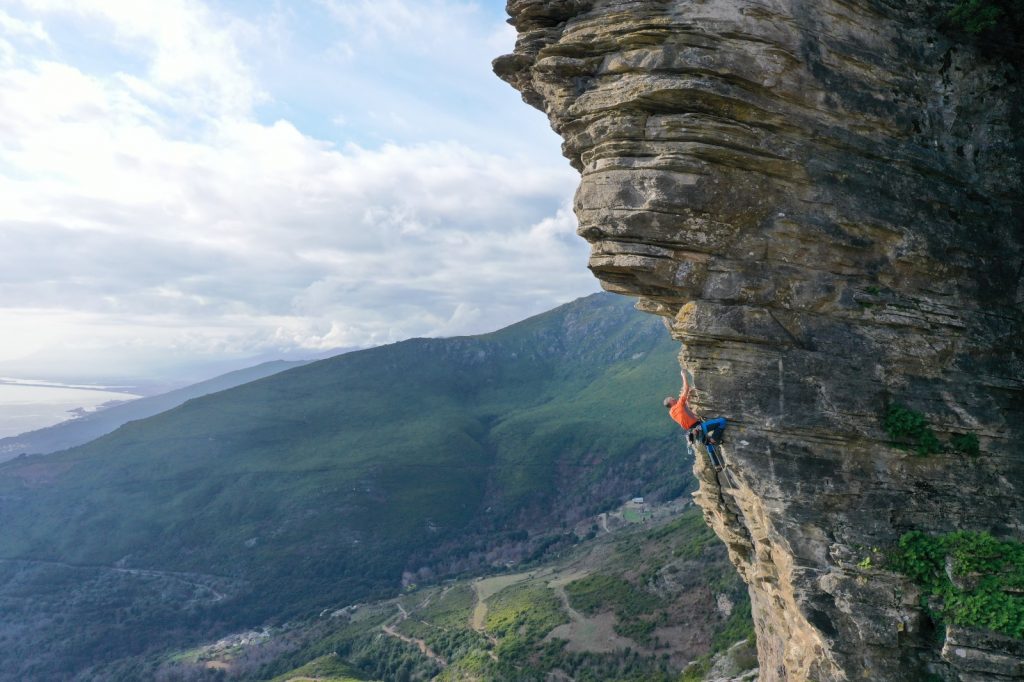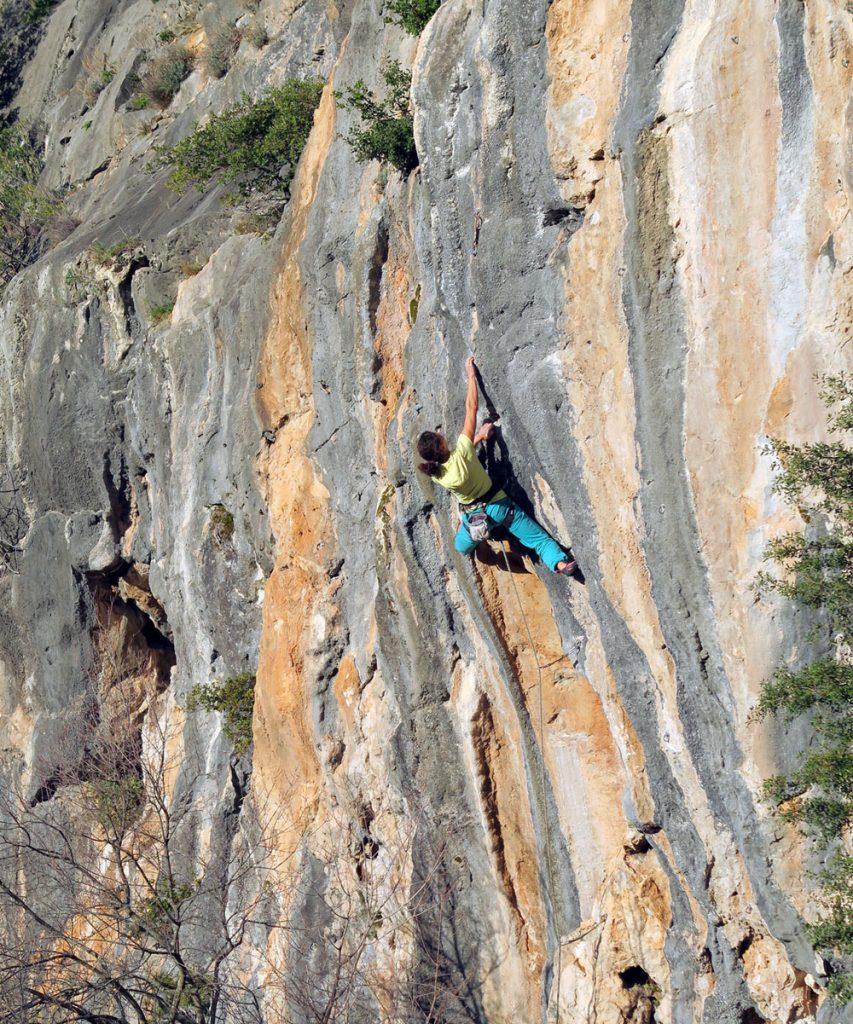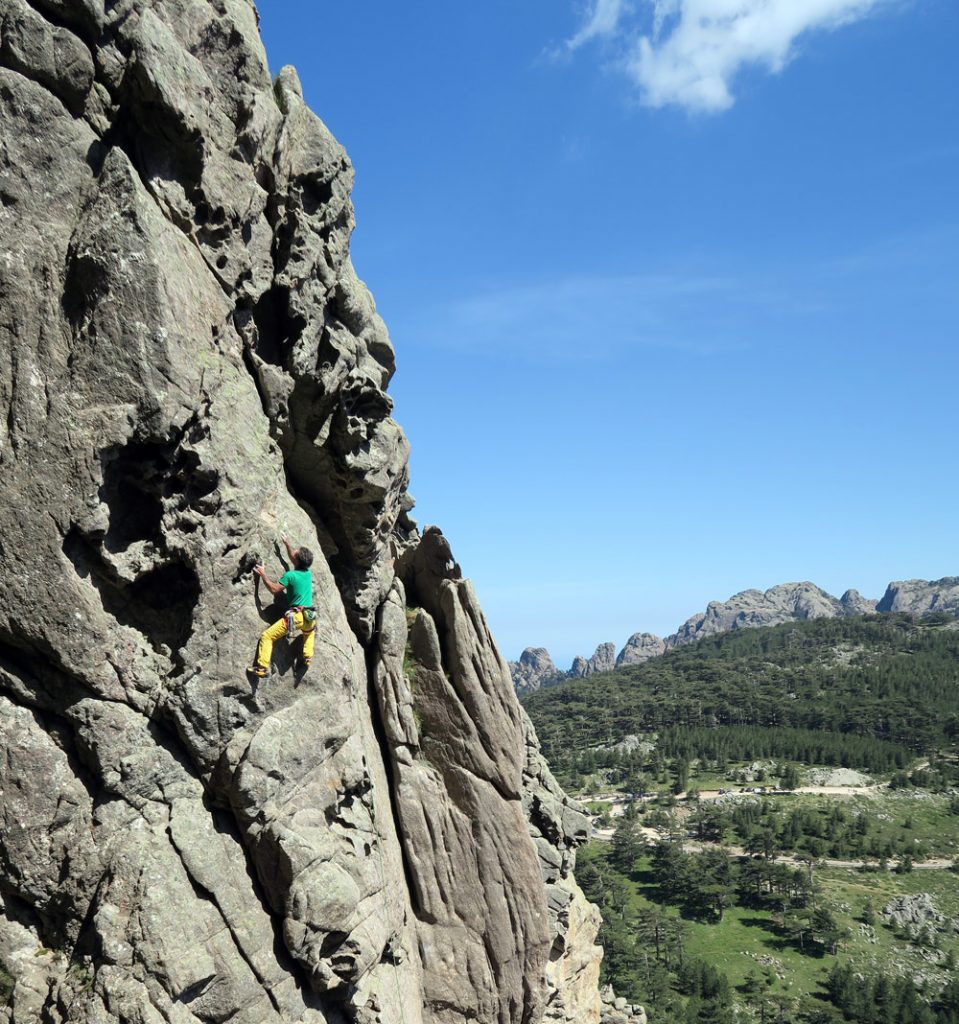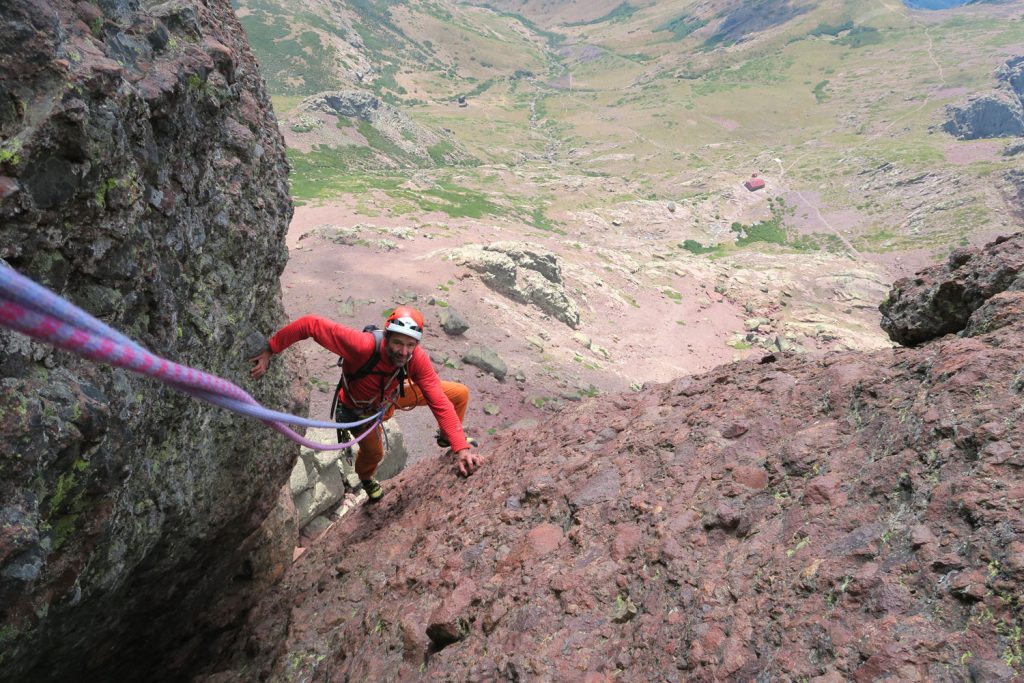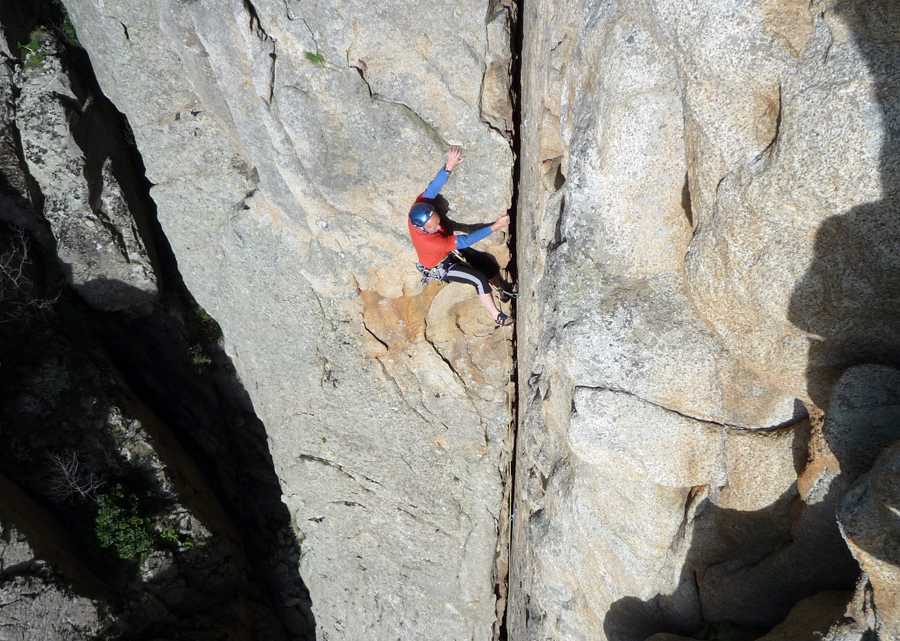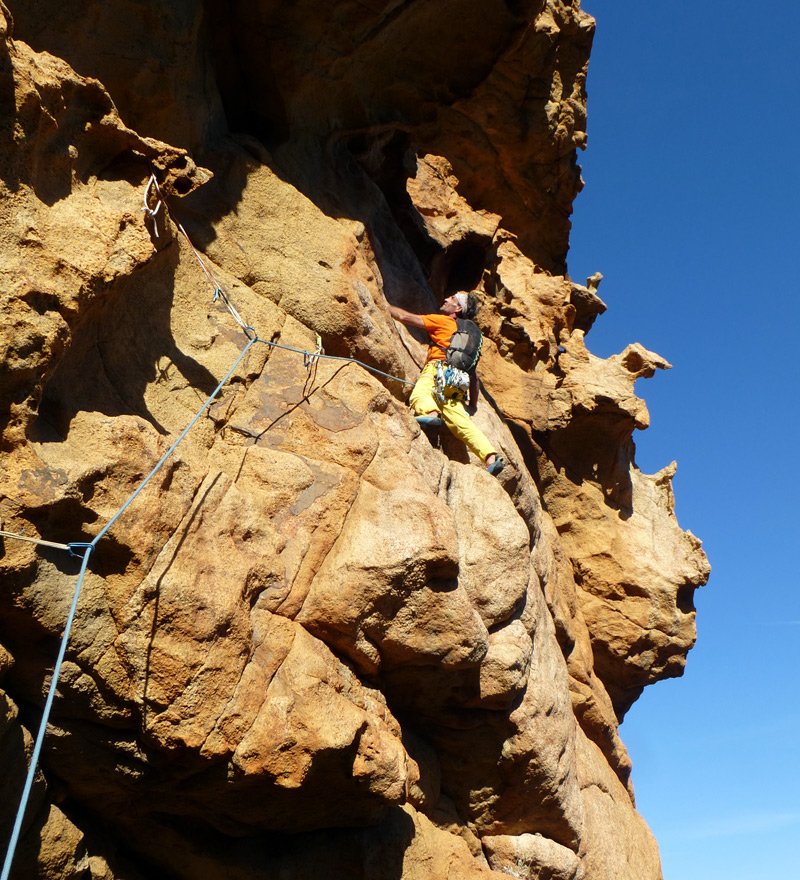Rock climbing in Corsica
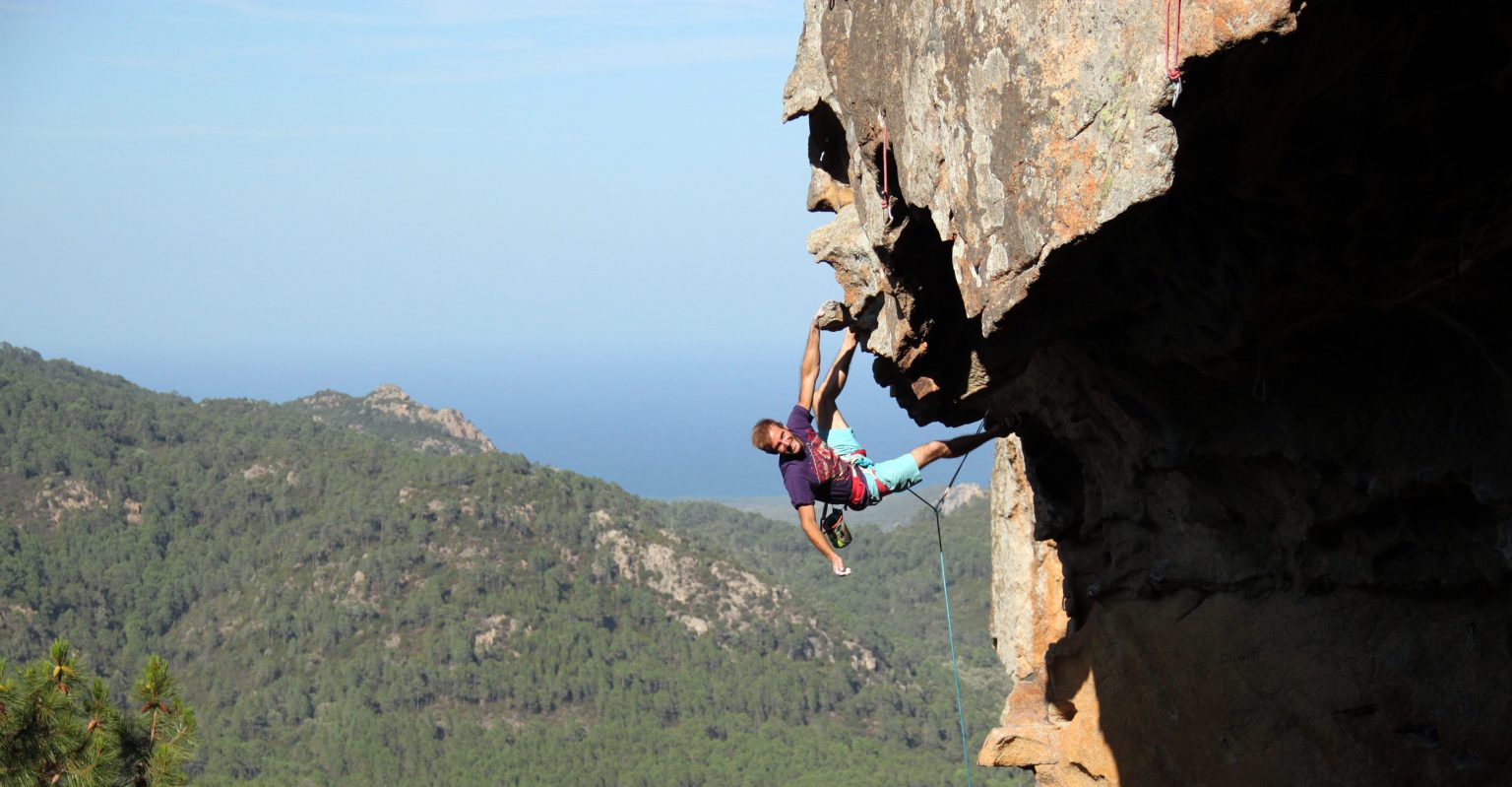
Bouldering, sport crags, or multi-pitch routes – here is a brief overview of rock climbing in Corsica.
Bouldering, sport crags, or multi-pitch routes – here is a brief overview of rock climbing in Corsica:
- The Alpine Corsica or shale Corsica mainly made of shist (the North-Western third of the island): Despite its name, this part doesn’t host the highest peaks. In Alpine Corsica, multi-pitch routes are practically non-existing, but the region is home to many sport crags, mainly around Bastia.
- The Hercynian Corsica or ancient Corsica: Dominated by granite. The highest peaks are made up of rhyolites. In this vast area (more than two-thirds of Corsica) the fate was not very fair when distributing the crags and cliffs. Some regions have been generously provided while others must be content with a few rocks emerging from the maquis.
At the junction of these “two Corsicas”, a few limestone outcrops allow you to vary the pleasure, especially in the Francardu region, north of Corti.
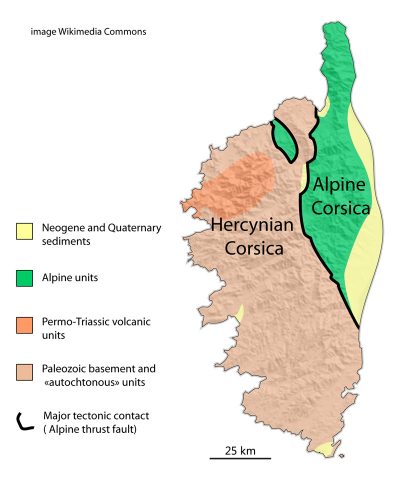
For deeper knowledge, it is necessary to separate sport climbing, multi-pitch climbing and bouldering.
For deeper knowledge, it is necessary to separate sport climbing, multi-pitch climbing and bouldering.
• Sport climbing
• Multi-pitch climbing
• Bouldering
Sport climbing
Here is a brief presentation of sport climbing from North to South in the main regions of Corsica. The main range of difficulty level is also indicated.
Finally, for the crags mentioned, links are provided to access additional information via the OmegaRoc application.
The Bastia region. The cliffs are mainly made up of shales or metamorphic limestone characterized by more or less pronounced layers. Often on overhanging walls, the climbing is physical and sustained on crimps and slopers. Although there are no very large climbing sites, but most are very interesting. The other regions of Alpine Corsica (Capicorsu, Castagniccia, Boziu..) are of no interest to climbers with the notable exception of Monte, the jewel of Castagniccia, one of the most beautiful crags on the island.
A noter, dans la région de San Fiurenzu (Saint Florent), les grimpeurs locaux ont équipé de nombreuses falaises de calcaire sablonneux très déversantes. Ces falaises sont toutes situées sur terrains privés et l’escalade n’y est que tolérée. Le rocher est très fragile et l’équipement est rapidement corrodé
La Balagne (Calvi – Isula-Rossa region) is better known for its beaches than for its crags. In recent years, climbing has developed well with the large and very beautiful crag of Suare et plusieurs sites moins importants.
With various orientations and styles, the crags enable climbing all year round. This region is suitable for climbers of all levels except the elite (>8a).
The Upper Ascu Valley, in addition to its many multi-pitch routes, hosts two increasingly popular summer crags. Illusions Perdues and Sous l’œil de Collina are the only rhyolitic sport crags on the island. Suitable for climbers at level between 6a and 7c.
The region of Corti (Corte) is undoubtedly the best developed. It is divided into two distinct areas :
– Around Francardu, many limestone crags are equipped. There are all climbing styles: wall with holes, vertical climbing on small holds, slabs, overhangs, and even a cave with some tufas.
Convient aux grimpeurs évoluant entre 6a et 8b
– The valley of Restonica contains granite crags like beads on a string. There is something for all levels and all tastes. However, two styles stand out: the very sculpted walls for physical and exhilarating climbing (La Bigoudaine or Le Mur des abeilles at Sorbellu are good examples) and the red granite with round holds which require technique and endurance (Frassetta, Les Boules at Picellu).
Most of the cliffs in the valley face south and do not allow climbing in summer. Fortunately, there are a few well-shaded exceptions : L’Oratoire, A Tomba and Chez Téo.
Suitable for climbers at level between 4c and 8a
Portu region :
Well equipped with high-level multi-pitch routes, this region has long been forgotten in terms of sport climbing. The complete rebolting of the Portu beach crag and the bolting of the very beautiful La Lonca have changed this situation. Combining seashore and shade almost all day, the Portu crag has become very popular. The Lonca crag is of very high quality. Perfect for 5/6a and 6c/7c climbers
Note, inland, the Ortu site, offered both bolted single- and multi-pitch routes. This site is currently closed by the municipality because of the FFME disengagement in all climbing crags at the national level. A recent change in the law provides hope that the ban will soon be lifted.
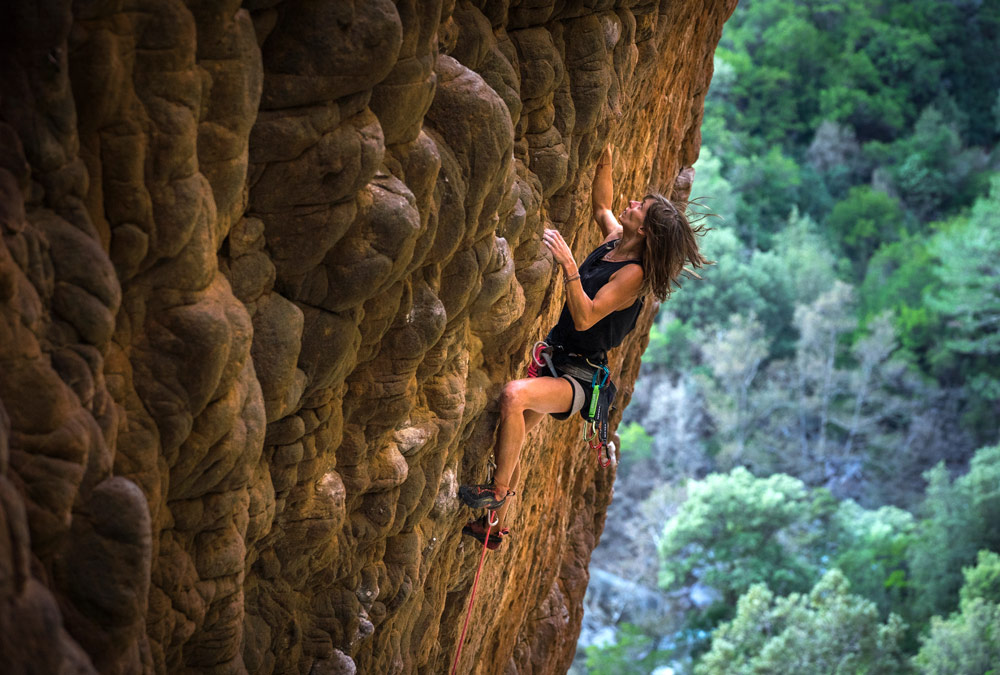
In the Aiacciu (Ajaccio) region, three important sites stand out:
– Le Gozzi is a mix of sport crags and multi-pitch routes. After a tiring approach, the reward is worth it: superb long and airy routes, and a four-star view.
– At the entrance of the city, the site of Saint Antoine consists of multiple sectors with a dominant friction slab and cracks. There are also some overhanging profiles.
– Inland, near the village of Bucugnà, la Richjusa has many sectors of varying levels. In summer, only la Source and Le Chameau sectors are passible.
This region also has several smaller crags.
Suitable for climbers at level between 4b and 8a
The Taravu : This large valley in the inland has many cliffs, but very few have been developed for climbing. The crag of Petra Piomba near the village of Livesi (Olivese) is the most interesting, especially in the high level or even the very high level. Well protected by a large roof, this cliff is passable also on rainy days.
At the entrance of Alta Rocca, l’aiguille de la Tana offers, in addition to the single-pitch crag, small multi-pitch routes perfect for initiation.
In the Southern region, the climbing sites are concentrated in the Bavella massif and on the eastern coast; nothing on the western side.
The col de Bavella is a paradise for climbers evolving between 4b and 7b. High level climbers will enjoy the crags further down the Sulinzara route. Note, at the Col de Bavella, the superb trad crag of Punta Bigornu. In the shade all day, it is suitable for climbers progressing between 6a+ and 7b on trad.
Several sport crags are scattered on the road between the Col de Bavella and Sulinzara. The main ones are :
La Baraka : Very few routes, but this is where you will find the superb eponymous crack in 8a on trad.
Mescaline : A crag well protected from sun and rain. The routes are short and rather bouldery. Level: between 7b and 8b
Le 3G/3G+ : Two very beautiful sectors and many routes in the 8th. Level: between 6c and 8b
Le Barring : This is the reference high level crag of the South. Level: between 7a and 8c
Finally, there are some beautiful crags between Sulinzara and Purtivechju (Porto Vecchio) :
Les 3 Caves which allows you to climb all year round, offers a variety of profiles. Superb climbing between 6a and 8a.
A Tyroliana, smaller, but facing north is also a good solution in summer. Level 6c-7b
The limestone crag of Conca is also very interesting in various styles.
Multi-pitch climbing
In Corsica, the main multi-pitch routes are found almost exclusively in Hercynian Corsica (or granitic Corsica). Alpine Corsica has less than ten routes of limited size.
By playing with altitude and orientation, it is possible to climb all year round in optimal conditions.
Here is a brief overview of the main “climbing” massifs of the island.
The Paglia Orba is the most prestigious of the Corsican mountains. It culminates at 2525m and all its faces offer climbing possibilities. It is the ideal place to climb in Summer, only if you master trad climbing and have a “mountain foot”. At La Paglia, there are no bolts and rather alpine approaches.
For a more detailed presentation of climbing at the Paglia Orba click here.
The Upper Ascu Valley is surrounded by many rhyolitic peaks suitable for climbing. The routes are mainly trad or mixed and the approaches, of variable duration, are generally steep in rocky terrain (without being technical). The ideal period is from the end of April to the end of September.
For a detailed presentation of climbing in the Upper Ascu, click here.
It was in Corti that the first PGHM (mountain rescuers team) in Corsica was established. In the 90s, its members bolted many routes in the valleys of Tavignanu and Restonica. ‘’PGHM bolting’’ (a term that has been established today) favours climbing with pleasure. These routes have greatly contributed to the democratization of climbing in Corsica. The two valleys that meet at Corti are well known to climbers.
The Tavignanu valley can be summed up by the superb Russulinu crag while the long Restonica valley allows you to climb almost all year round, except for the winter months. Bolted routes are in the majority, but in the Upper Restonica Valley, bolted routes run alongside with mixed or trad routes.
About twenty km from Corti, on the road to Aiacciu (Ajaccio), you find the Cervellu massif: With two distinct peaks, it is perfect for the long off seasons. From 5c, everyone will find something that suits them, bolted or not
On the west coast, near the Gulf of Portu, the superb walls of Capu d’Ortu, E tre Signore and especially I Cascioni offer multi-pitch routes for experienced climbers.
The Capu d’Ortu is entirely reserved for trad climbing. On the Signore Centrale and Occidentale, the multi-pitch routes are bolted or mixed. Finally, a little further inland, the overhanging wall of the Cascioni is reserved for the high level climbing. For more information on rock climbing in the Portu area, click here.
The small massif of Gozzi at the entrance of Aiacciu, has about twenty multi-pitch routes, mostly bolted. The season runs from October to the end of April.
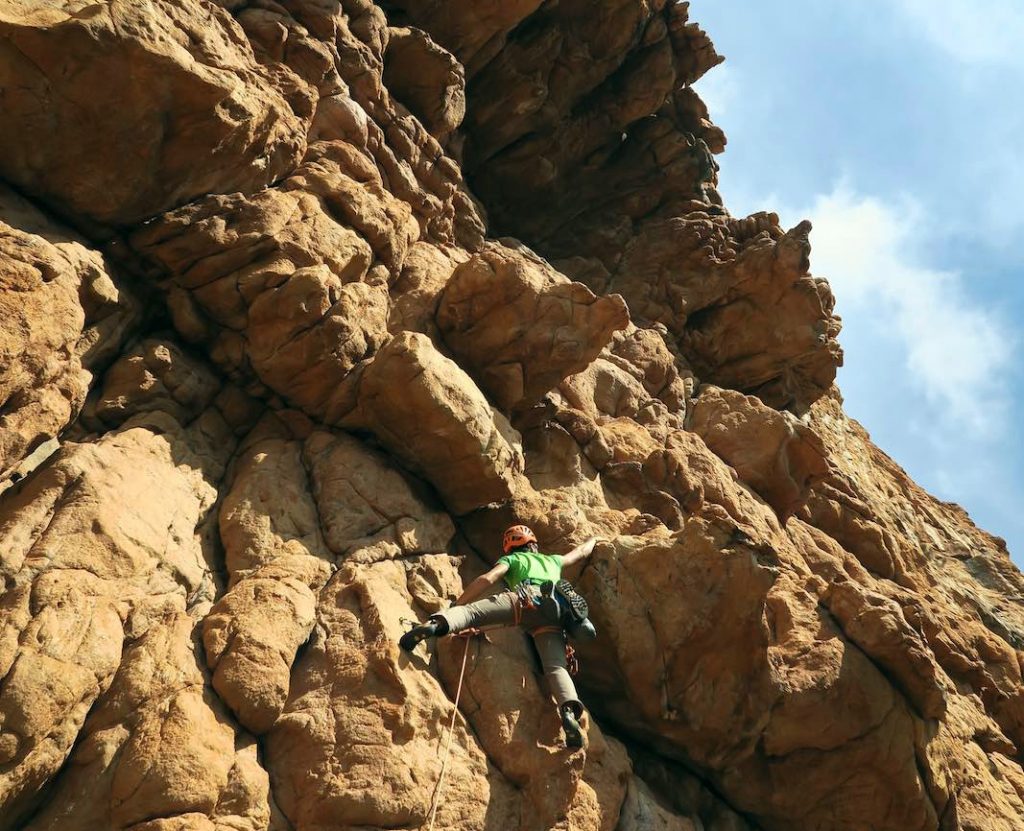
Bouldering
In Corsica, the climbers are already not very numerous so imagine the boulderers… The activity is totally dependent on a few rare enthusiasts who tirelessly develop new problems.
Corsica Bloc, the bouldering climbing guide is sold out in the printed version, but the pdf version is available on the net here ici.
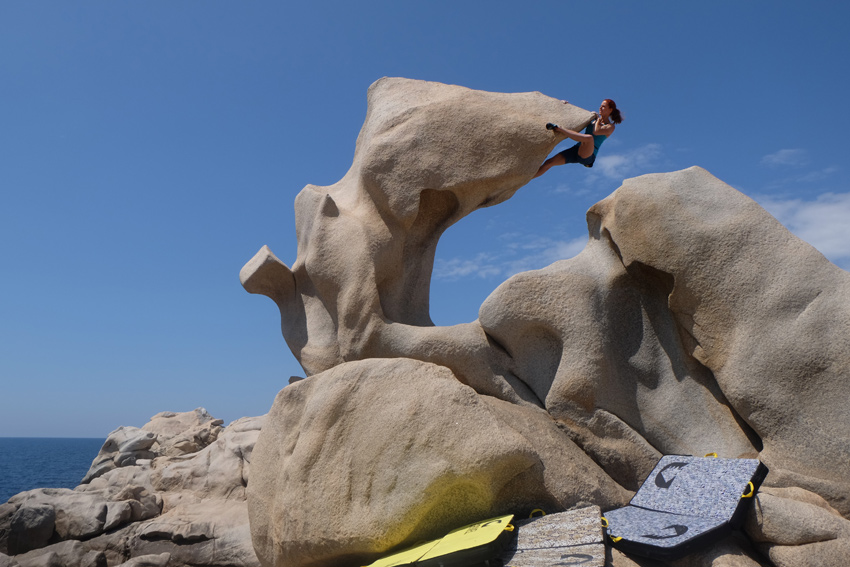
Seashore sites are very popular because they are particularly aesthetic and have the advantage of not getting ”mossy”. On the other hand, the crystals are often very abrasive, and the proximity of the sea accentuates the greasy feeling of the rock.
The main marine sites are: Punta di Spanu near Calvi and Capineru not far from Bunifaziu (Bonifacio).
Inland, the Valdu di Saltu site is by far the most important. Unfortunately, its “guardians” having migrated to other areas, so mosses and lichens are regaining some ground. A very complete pdf climbing guide of the site can be found here.
The Corti region is also well supplied with the Vecchio site along the river and several smaller sites in the Restonica valley.
Finally, there are all the sites that are just waiting to be revealed, to be born from your imagination and your work.
